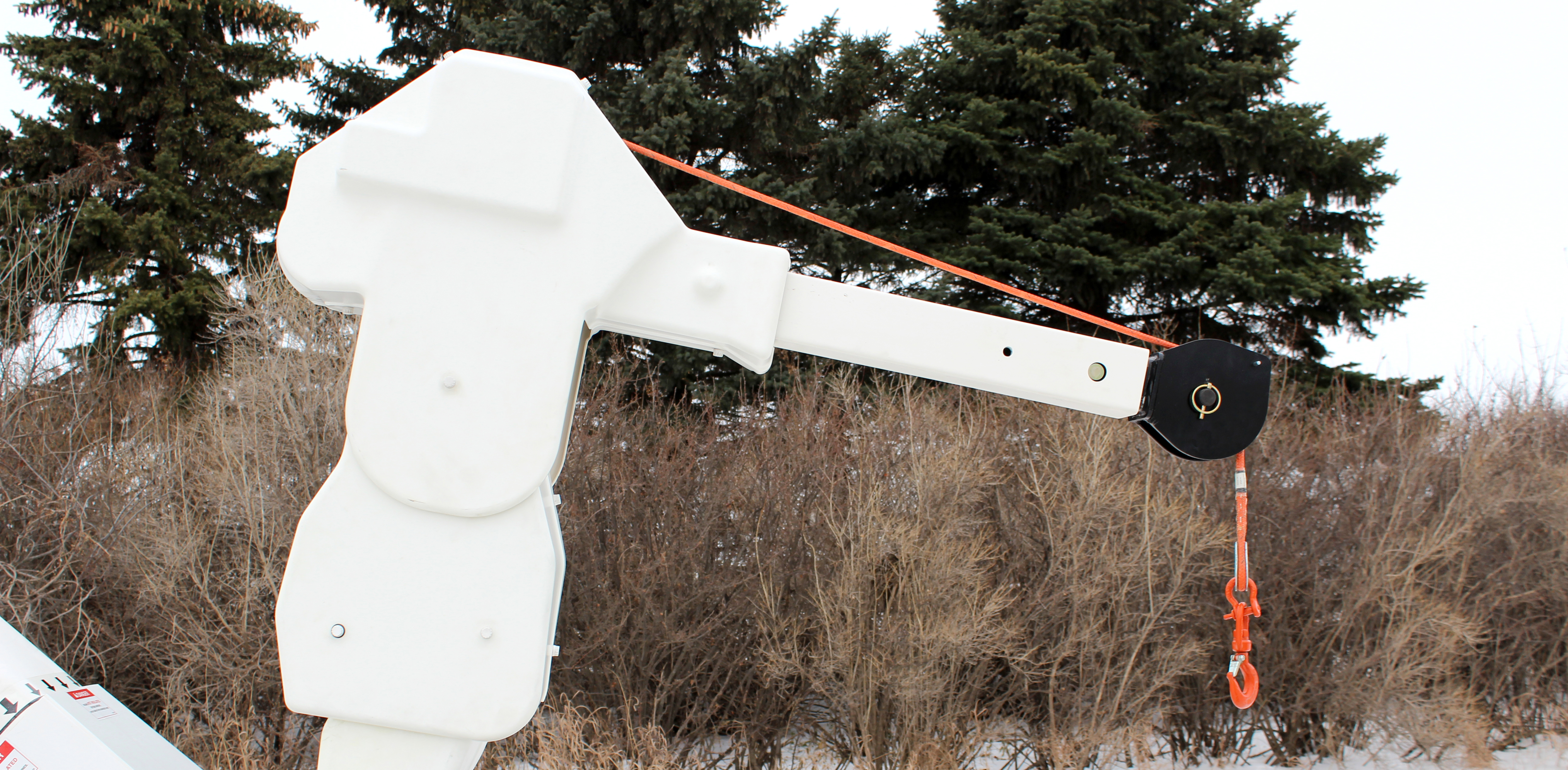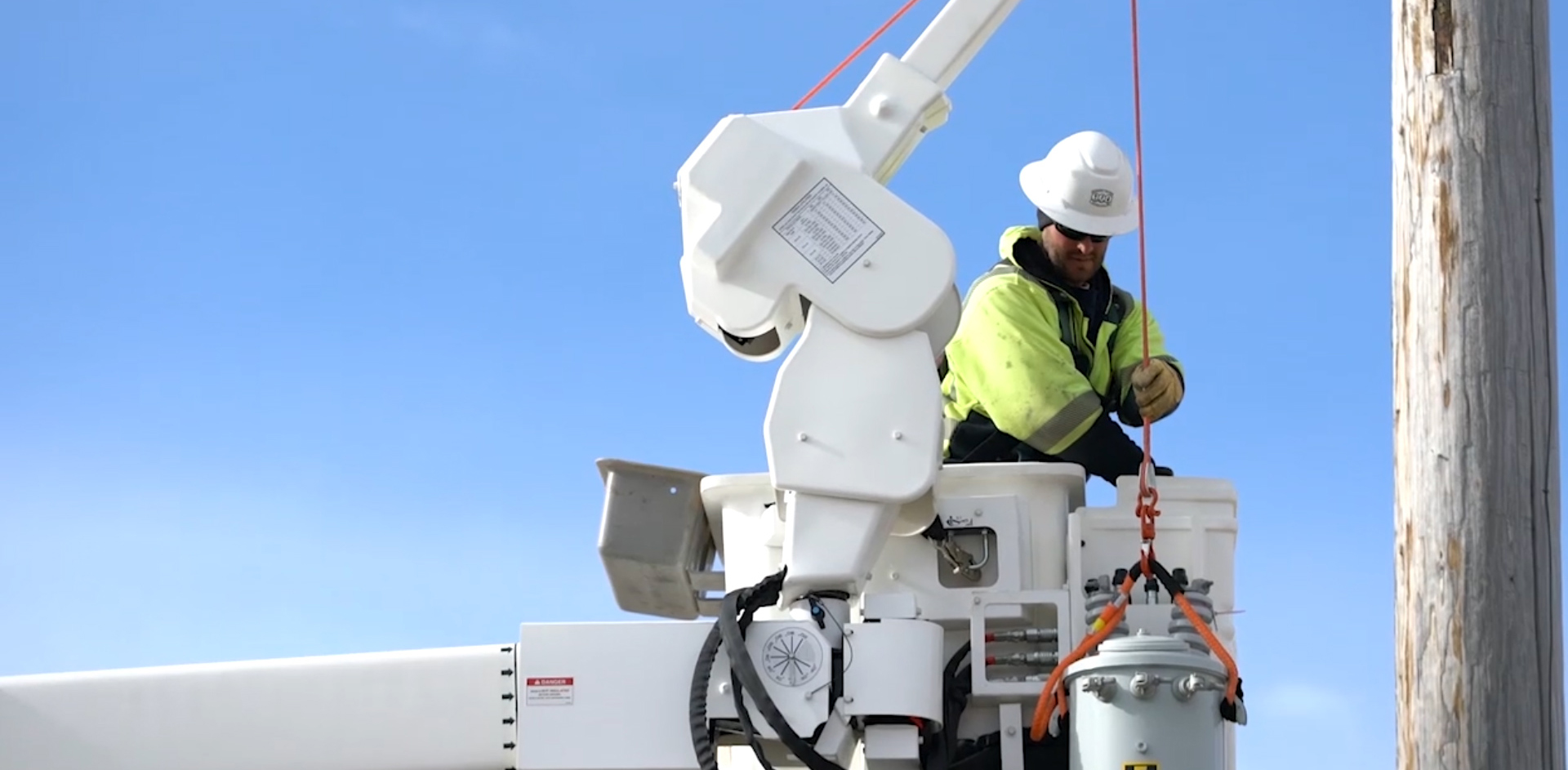Best Practices When Handling Transformers with Your Bucket Truck, Part 4: Understanding Proper Set Up

Here is the final part of the series on Best Practices When Handling Transformers with Your Bucket Truck. Today, we cover our last part on what line workers should know: Understanding Proper Set Up
Knowing The Load, and
Understanding proper setup.
Position Your Truck
Determine the truck location to place the load line directly over the center or gravity of the load to be lifted. The location must have room for the platform and ability to reach the method of securing the load to the structure. Be aware of overhead lines and structures which would interfere with the jib position. The jib angle will be relatively high to allow the load to be close to the operator to stabilize and locate the load. If equipped use the platform rotator for position to aid hanging the transformer on the structure.
Locate the truck so it does not interfere with traffic; or barricade and close the traffic lane(s) to prevent working over traffic or the elbow of the boom getting hit according to your companies work practice. Set the truck up in a location that will support the stabilizers and truck. If in doubt, crib or use mats to provide support. The further extended the load line is from the basket shaft the less capacity you will have.
Operating on a Slope
The truck must be level as indicated near the outrigger controls. Some must be level and others on a maximum of 5-degree slope. Follow the instructions in the manual for setting the outriggers. If the unit has only one set of outriggers, they can’t be used to level the vehicle, the tires must be cribbed to less than 5-degree slope. Level the truck using cribbing as needed. It is possible to stack multiple outrigger pads to gain height if needed. Always position the outrigger foot in the center of the outrigger pad. If only equipped with one set of outriggers the tires are the other stabilizing support and leveling with the outriggers may decrease stability and capacity.
Lifting the Load:
Inspect the load line and any slings being used before lifting. When connecting the load line to the load or transformer use slings rated for the load. Do not use the load line as a sling, it will cause internal damage to the rope. The load line can be equipped with a hook with a safety latch or a clevis with a threaded pin to connect to the sling or load. Be aware of how the load line is spooling on the winch drum to prevent stacking up where it can slip down causing a shock load.
If working near energized lines maintain minimum approach distance or use insulating covers including ground or static lines, they are current carrying conductors. Finally, Terex Utilities recommends always using an insulating section or link when lifting conductors to prevent energizing the boom tip. The jib and load line must be considered conductive. The conductor lifter insulation or insulating link must be treated as a hot stick, inspected, and cleaned before use, and stored properly. The clear span distance of the insulating tool depends on the voltage. Users should follow OSHA 1926 subpart V and maintain minimum clear insulation distances required.
Lifting transformers is part of the everyday tasks conducted by utility crews. Bucket trucks equipped with jibs have made this work easier and more productive. In some cases, bucket trucks with material handling capability can also reduce the amount of equipment needed on the job site. Most important, they can also improve safety when used properly. The next time your crew changes out a transformer, consider best practices for equipment selection, inspection, setup and load handling.
Related Posts

Best Practices When Handling Transformers with Your Bucket Truck, Part 1: Knowing Your Jib
When it comes to lifting transformers, bucket trucks equipped with jibs are one of the handiest tools available to line workers. However, not all jibs are the same and the user should evaluate the type of work when choosing the equipment for the job...
Continue Reading

Best Practices When Handling Transformers with Your Bucket Truck, Part 2: Inspecting Your Jib
Most bucket trucks sold to the utility industry are equipped with jibs, which makes it very handy to lift and handle transformers. However, not all jibs are the same and the user should evaluate the type of work when choosing the equipment for the job.
Continue Reading

Best Practices When Handling Transformers with Your Bucket Truck, Part 3: Knowing Your Load
Over the last couple of weeks, we covered the first 2 parts of this series on knowing your jib and some best practices on inspecting your jib before handling transformers in this 4-part series. This week, we move to the third area that line workers should know: Knowing Your Load.
Continue Reading

.png?sfvrsn=cfc0900d_0)